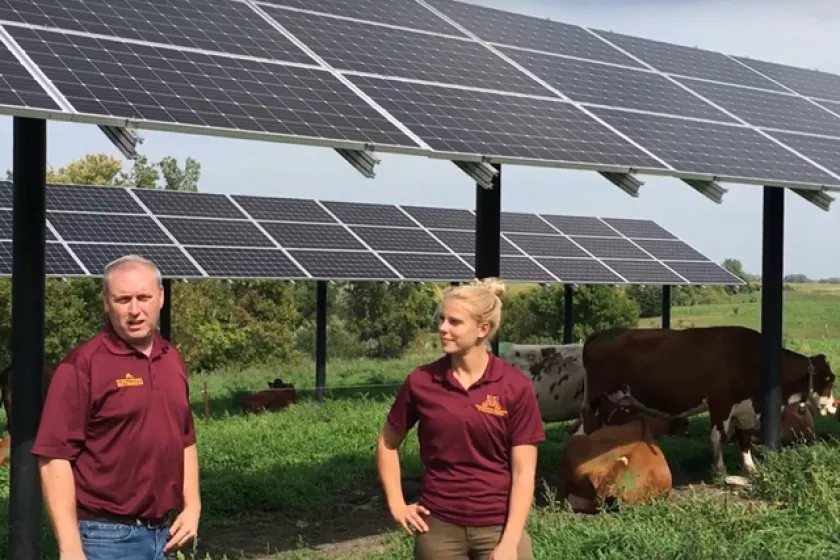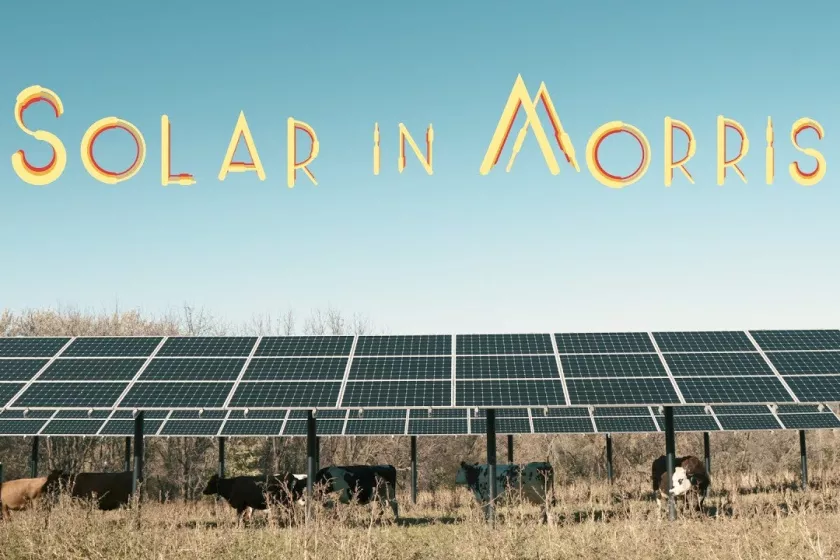The concept of “dual use” of agrivoltaics, or the combination of agricultural land use and solar electric production, has been around since the early 1980s, explains Fritz Ebinger, Rural Energy Development Program Manager of Clean Energy Resource Teams (CERTs). Many institutions, including the National Renewable Energy Labs and WCROC, are currently experimenting with horticultural and grazing practices under solar farms to quantify the benefits of co-locating solar technology in farm fields.
In a recent WCROC study, researchers assessed the potential of solar to provide shade benefits to the Center’s grazing dairy herd. The 30 kW system can provide shade relief for 30 to 40 cows under one structure, an important benefit during hot, summer months where average temperatures in the region range from 81 to 93 degrees.
The preliminary study tracked and compared the behavior and body temperature of two groups of grazing cows over a three month period during the summer of 2019—those with access to shade under ground-mounted PV solar panels and those without. Comparing differences across these groups revealed body temperature benefits of the solar installation to pastured dairy cows.
This research from WCROC is getting noticed by the agricultural community and others in Minnesota. You can see recent coverage from Dairy Herd Management, Progressive Farmer, and even Minnesota Public Radio.
In the future, the research team plans to assess:
- How shade from solar panels impacts cows’ milk production long-term
- What benefits solar tracking systems may provide to livestock farms
- How solar panels may act as windbreaks for cattle
- Which crops and forages grow best under solar systems




